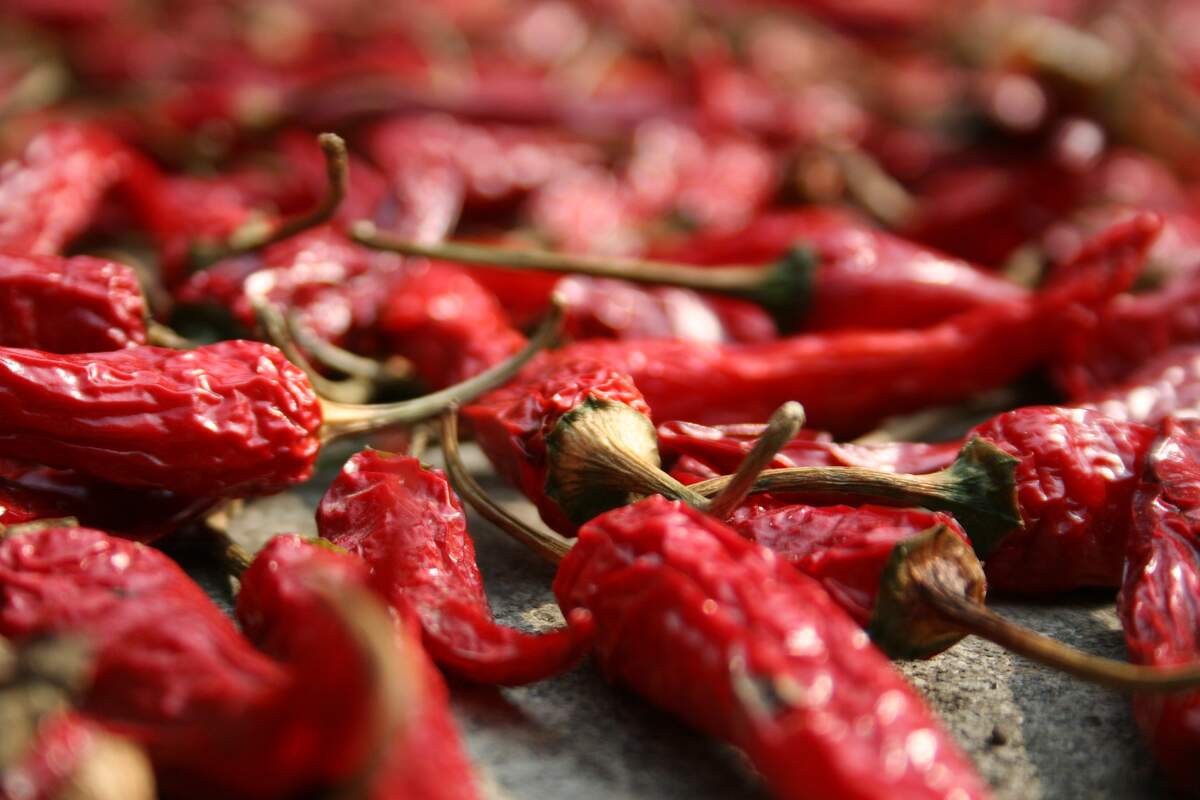

National Hot Heads Chili Day
Also known as
Hot Head Chili Days
Observed
annually on January 17th
Dates
Tags
Food & Drink
Hashtags
Sources
National Hot Heads Chili Day is a day for spicy chili peppers and for making and eating dishes that have them. It is sometimes celebrated as Hot Head Chili Days, a two-day event that takes place on both January 17 and 18. Chili peppers—or chilis or chiles—are from the nightshade family and the genus Capsicum. They have a range of spiciness and flavors, their heat coming from capsaicin and other capsaicinoids. The intensity of their heat is measured in Scoville heat units (SHU). Created by Wilbur Scoville in 1912, the highest measurement on the scale is 16,000,000 SHU, which is the measurement for pure capsaicin. For comparison, jalapeños range from 3,500–10,000 SHU, cayennes from 30,000–50,000 SHU, and habaneros from 100,000 to 350,000 SHU. Chili peppers have capsaicin because the plants produce it to defend themselves from predatory animals and fungus-carrying insects.
There are five domesticated species of chili peppers. Capsicum annuum includes pepper varieties such as banana, cayenne, jalapeño (called chipotle when smoke-dried), Thai, chiltepin, serrano, poblano (called ancho when dried), and New Mexico chile. Capsicum frutescens has peppers like tabasco, piri-piri, Malawian Kambuzi, and malagueta. Habanero, Scotch bonnet, datil, and naga are from the Capsicum chinense species, aji are from Capsicum baccatum, and rocoto are from Capsicum pubescens.
Humans have consumed chili peppers since around 7,500 BCE. The peppers are believed to have first been grown in Central or South America, likely in present-day Bolivia, and were first cultivated in Mexico, being one of the first crops cultivated in the Americas. Christopher Columbus's men became the first Europeans to try them, eating them in the Caribbean, and they were the first to call them peppers because they had spiciness like the black pepper found in their homeland. Many cultivars of chili peppers made their way around the world following the Columbian exchange. Chili peppers spread around Asia on spice trade routes on account of Portuguese traders. They made their way to India by the sixteenth century. Today Peru has the most diversity of chili peppers.
Chili peppers are used as a spice and to make dishes hotter. If whole pepper pods are used, they are usually prepared as a vegetable and may be eaten whole or in large slices. Pods may also be pickled, stored in oil, or brined. Chili peppers may be used to make hot sauce, but can also be dried and crushed and ground to make paprika, chili powder, and cayenne. Chili peppers are particularly prominent in the cuisines of Mexico, China, India, Thailand, and other East Asian and South American countries. In Mexico, dishes often use the whole pepper, such as to make chiles relleno. In northern Mexico, chiltepin peppers are added to cheeses and soups to add spiciness. In Southern Mexico, mole sauce is made with dried peppers like ancho and chipotle peppers. Chilis are also used to make salsa throughout Mexico and elsewhere. In India, curries and dry dishes are flavored with hot green chilis. Some Indian dishes are made using only chilis and spices.
Some evidence suggests that chili peppers lower the risk of dying from cardiovascular disease and cancer. The peppers are not only used as food: the capsaicin is used as an analgesic in topical ointments, nasal sprays, and dermal patches. For their many culinary uses, their potential health benefits, and their medical value, we laud chili peppers today with National Hot Heads Chili Day!
How to Observe National Hot Heads Chili Day
Celebrate by making and eating a dish with chili peppers. Check out these one or more of these recipes to get yourself started:
- chile relleno or another recipe with poblanos
- salsa
- mole sauce
- spicy chili
- Indian green curry or another Indian recipe that uses chiles
- hot sauce
- pickled peppers





















